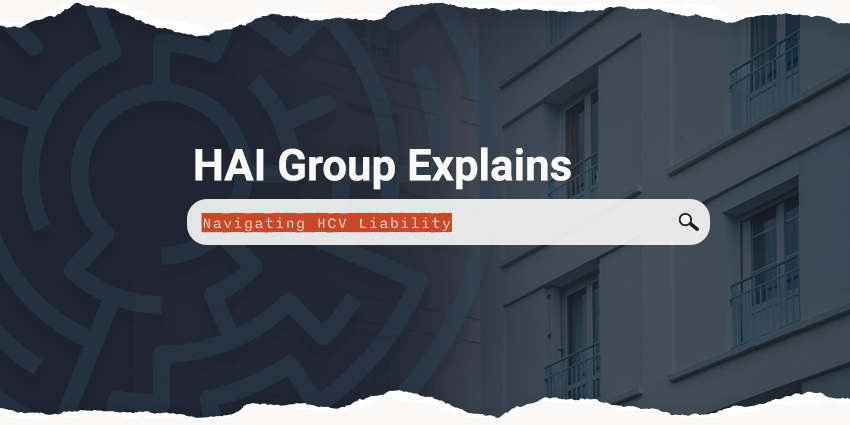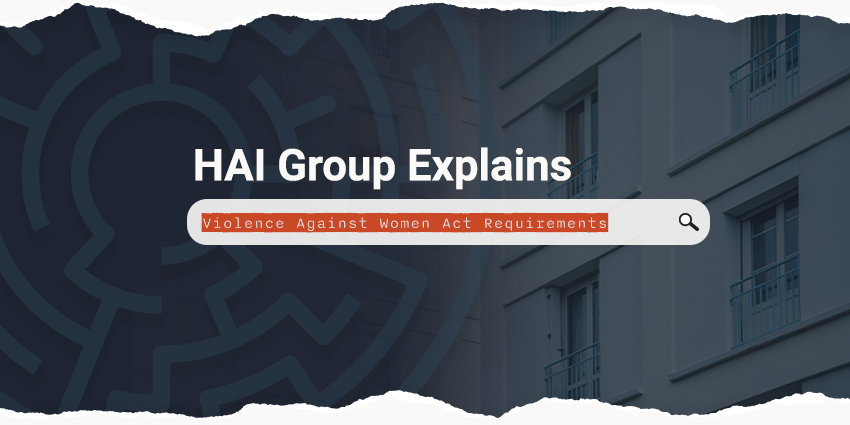In October 2023, the U.S. Department of Housing and Urban Development (HUD) rolled out NSPIRE, a new model for conducting and processing physical inspections of HUD-assisted housing.
Short for the National Standards for the Physical Inspection of Real Estate, NSPIRE replaces HUD’s two older inspection models—Housing Quality Standards (HQS) and the Uniform Physical Condition Standards (UPCS). NSPIRE aims to consolidate and update these standards to create a more comprehensive, consistent, and transparent framework for property inspections across all HUD-assisted housing programs. NSPIRE unifies these older standards into a single model with two variations: NSPIRE for Public Housing and NSPIRE for Housing Choice Voucher.
“The new NSPIRE model prioritizes health, safety, and functional defects over appearance,” HUD notes on its website. “It implements inspections that better reflect the true physical conditions of the property. The NSPIRE model supports the adoption of sound, year-round maintenance practices.”
HUD’s goal with NSPIRE is to improve residents’ quality of life by directing attention to what matters most: their housing units. Development of the program included a two-year demonstration process during which HUD collaborated with approximately 4,500 volunteer properties to test and improve it.

Why NSPIRE? Addressing the Need for Change
HUD determined through analysis and review of HQS and UPCS that, while well-intentioned, the two inspection models—adopted in the early 2000s—no longer aligned with HUD’s priorities or the state of the housing industry.
Through NSPIRE, HUD intends to safeguard affordable housing for American families and promote the health and safety of residents living in HUD-assisted housing. NSPIRE provides an improved view of a property’s physical condition while encouraging property owners to perform year-round maintenance practices and address health and safety risks in a timely fashion, said Brian Altshuler, assistant director of HAI Group Online Training.
“It’s great to see these critical inspection protocols being modernized,” Altshuler said. “While much remains the same, the overall focus has shifted to meet residents’ expectations for safe and habitable homes.”
Altshuler pointed out that there’s a lot to unpack to understand NSPIRE, the changes it brings, and how housing agencies will use the new inspection tool during walkthroughs. HAI Group Online Training, in partnership with Nan McKay and Associates, is working to provide housing agencies with the information they need to navigate NSPIRE. In June 2024, HAI Group Online Training released the Nan McKay NSPIRE for Public Housing Certification course on its platform.
Key differences in NSPIRE
Inspectors using NSPIRE will immediately recognize changes to the inspectable areas. UPCS has five inspectable areas, while HQS has 13. NSPIRE unifies these into three strategic key areas: Unit, Inside, and Outside.
What do these areas mean?
- Unit: The interior component of an individual dwelling where the resident lives.
- Inside: Interior common areas and building systems, but not inside a unit. Inside spaces include laundry rooms, workout facilities, communal kitchens, and more.
- Outside: The building site, exterior components, and building systems outside the unit or building.

NSPIRE standards are listed alphabetically on the NSPIRE checklist, identifying areas of a property, deficiency descriptions, where on a property the issue is, and space for comments. The image below is an example of some of the final NSPIRE standards.

Let’s take a closer look at the Cabinet and Storage standards:

NSPIRE’s rating system includes four categories, each with a designated response time. Categories range from life-threatening, which prompts a 24-hour response time, to low, which has a 60-day response time. In the Cabinet and Storage standards example, if food storage is not present (Deficiency 1) in a unit or a unit’s food storage component is damaged, inoperable, or missing (Deficiency 2), the health and safety determination is considered “moderate” and a response is required within 30 days. If a food storage component outside of a unit is damaged, inoperable, or missing (Deficiency 2), say in a common area, the health and safety determination is considered low and a response is required within 60 days.
Get Certified: The NSPIRE for Public Housing course
NSPIRE is a significant change in inspection for HUD-assisted housing, making it essential for all public housing employees—from inspectors and supervisors to property managers and housing professionals—to wrap their heads around the model. HAI Group Online Training’s Nan McKay NSPIRE for Public Housing Certification course, led by Nan McKay trainer and inspector Morgan Petragallo, is now available. Watch the video below to learn more about the course and what you can expect from it:
The certification course is designed to:
- Help you understand HUD’s decision to change to NSPIRE.
- Equip you with the knowledge and skills necessary to excel as a public housing inspector.
- Cover everything from the fundamentals of NSPIRE to the intricacies of inspection techniques.
Through the course, you will:
- Gain insight into the three new inspectable areas.
- Understand the different types of inspections.
- Unravel the process of determining the physical condition score.
- Grasp how this score influences the frequency of inspections.
“No matter your role, the NSPIRE for Public Housing Certification is critical to enhancing your expertise and ensuring compliance with NSPIRE standards,” Altshuler said. “And, because the course is available online, you can pursue your certification conveniently from wherever you are at a time that works best for your schedule.”
Ready to earn your NSPIRE for Public Housing certification?
In the meantime, contact our Online Training Team with any questions.
This article is for general information only. HAI Group makes no representation or warranty about the accuracy or applicability of this information for any particular use or circumstance. Your use of this information is at your own discretion and risk. HAI Group and any author or contributor identified herein assume no responsibility for your use of this information. You should consult with your attorney or subject matter advisor before adopting any risk management strategy or policy.







